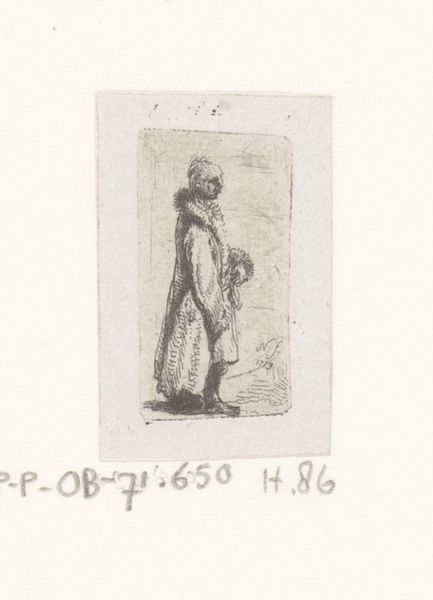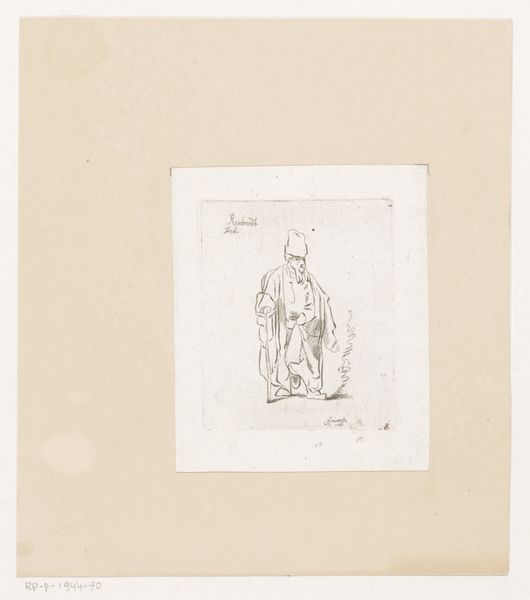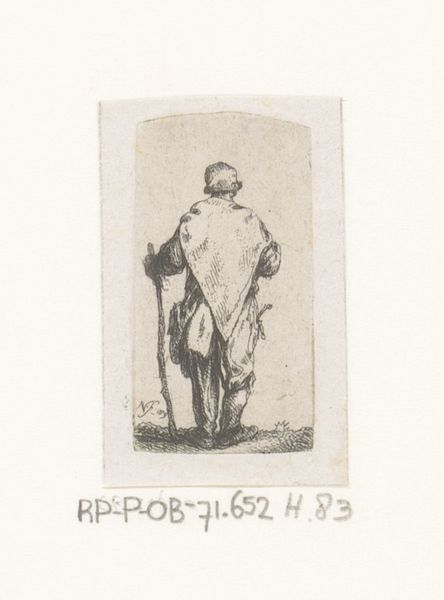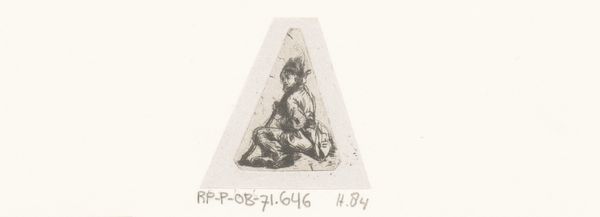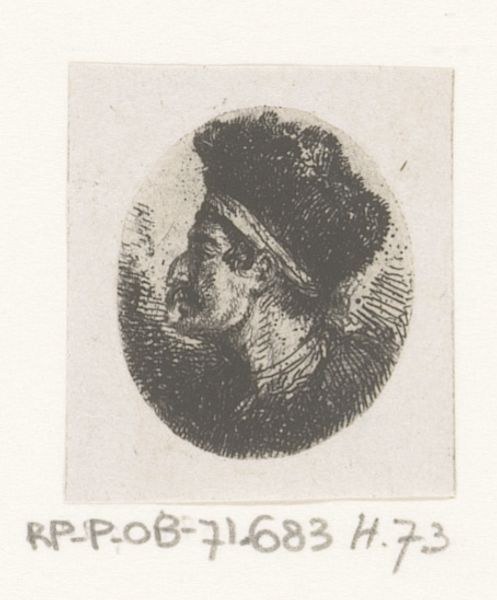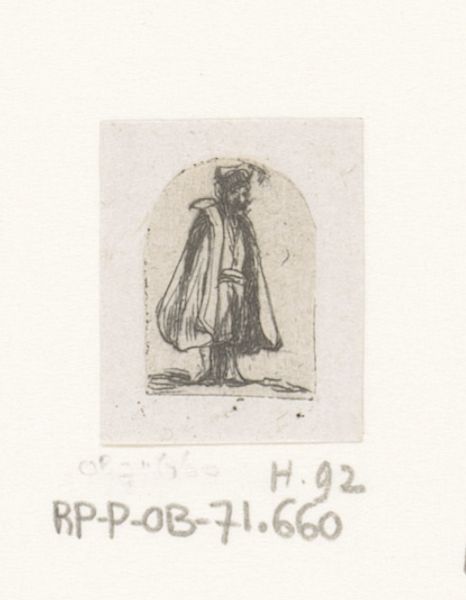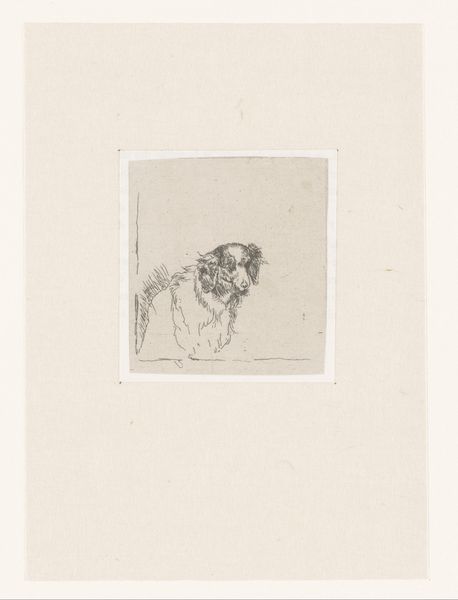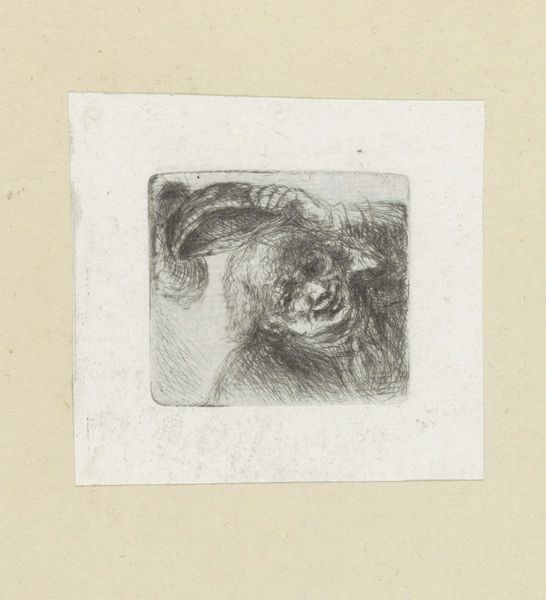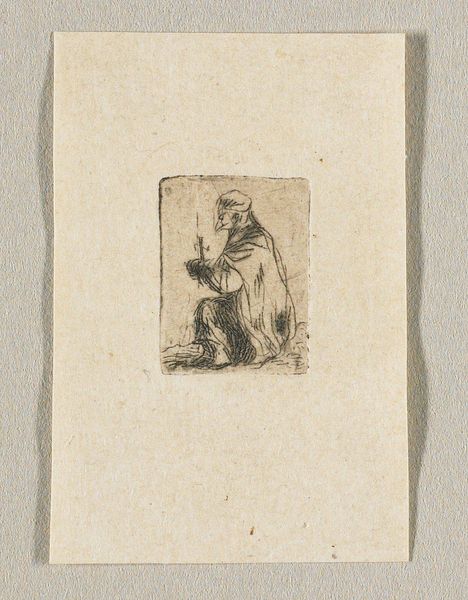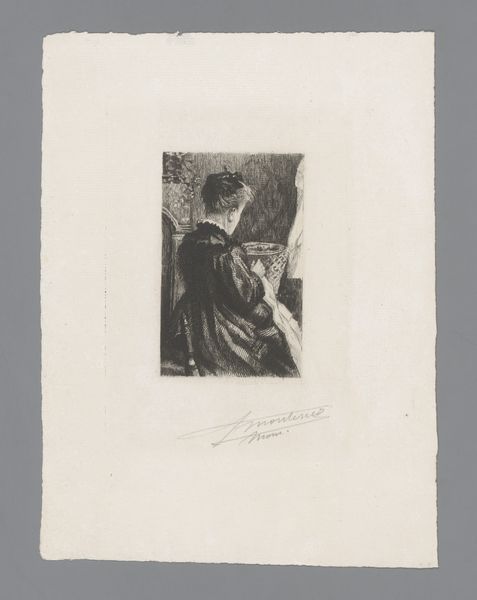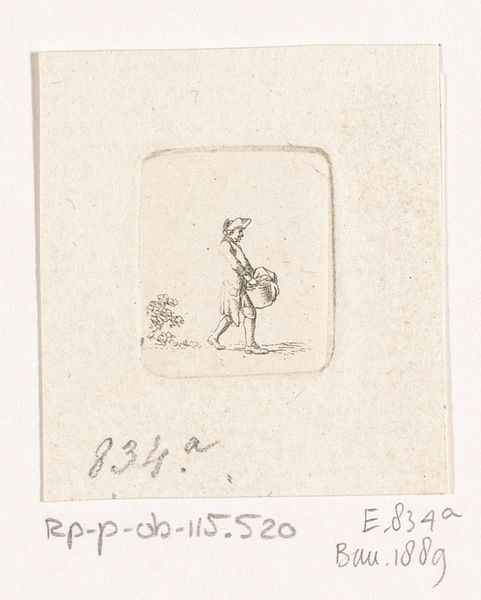
Dimensions: height 15 mm, width 12 mm
Copyright: Rijks Museum: Open Domain
Curator: Welcome! Today, we’re observing "Geknielde monnik met kruis," or "Kneeling Monk with Cross," an etching by Jean-Pierre Norblin de la Gourdaine, dating from 1778 to 1780. Editor: The immediate feeling is one of starkness, wouldn't you agree? The figure is isolated and reduced to these thin, almost frantic lines. It conveys a real sense of austerity and vulnerability. Curator: Precisely! The use of etching, the specific process here, suggests both accessibility and reproducibility. Prints like this allowed ideas and imagery to circulate widely. Who was this work produced for, and how did it shape opinions on religious life during that period? Were there multiple editions, and how did their material quality reflect their target audience? Editor: Good point. Looking closer, this could be read as commentary on religious devotion versus institutional power. The lone monk, seemingly burdened by faith. Is it reverence, despair, or something more complex? How would contemporary viewers receive that symbolism, in terms of obedience and liberation? Curator: Right. Norblin often worked outside the artistic establishment, capturing everyday life. Is this depiction of religious solemnity authentic or satirical? The use of minimal ink, almost hasty strokes, contrasts with the grandeur we typically associate with Baroque religious imagery. Was this economical choice reflective of material realities or an aesthetic statement? Editor: Absolutely. Think about the broader upheaval during the late 18th century. Revolutionary thought, questioning of authority, growing skepticism towards the Church...this small print participates in that larger cultural conversation, inviting reflection on belief. Also the physical labour it took to kneel during that period would cause a class barrier to develop. It is a political act of defiance of status quo for those less affluent who may physically or professionally challenged. Curator: That political perspective makes the image feel alive. Even on this small scale, the work resonates with the tensions of its time. Editor: Indeed. Seeing it through both a material lens and the historical forces allows us to unpack those layered meanings.
Comments
No comments
Be the first to comment and join the conversation on the ultimate creative platform.
